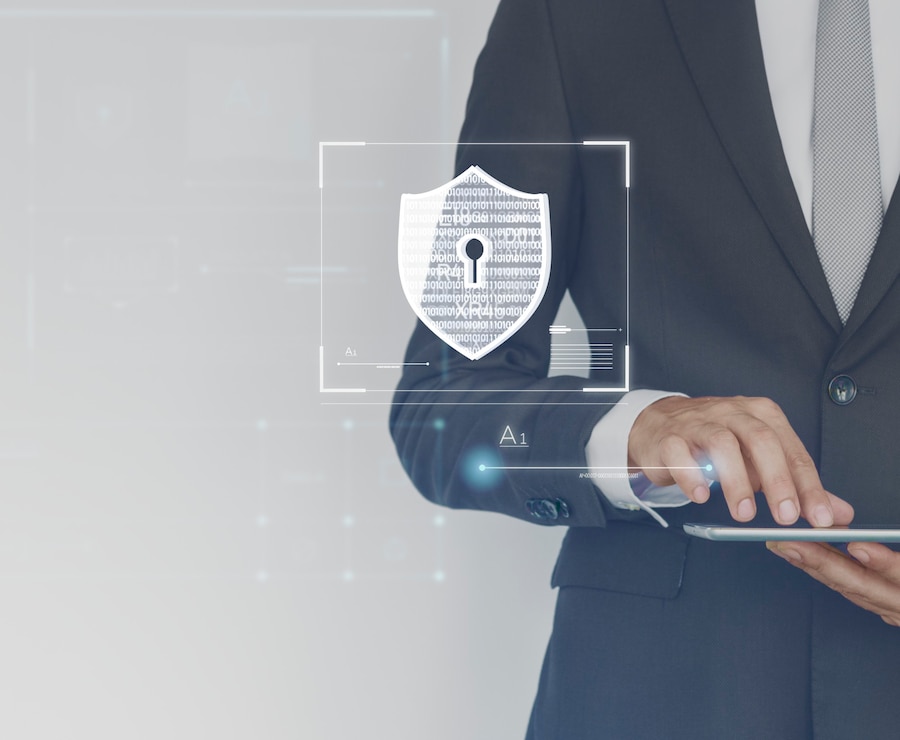Protect Your Data: Try These 7 Trusted Solutions
4 Mins Read
Published on: 04 October 2022
Last Updated on: 23 November 2022

toc impalement
Many organizations have been rushing to implement rules and security processes as a result of the abrupt shift to remote work. Since it has now been clear that remote work is not going anywhere, it is becoming more common to take cybersecurity precautions for remote employees.
What solutions must your company try in the near future to safeguard remote access for its employees? We’ll go over some cybersecurity best practices for remote work today so you can protect your business.
Remote Work Security Best Practices:
1. Start using the cloud
It is recommended to choose cloud software if your workforce consists of remote or hybrid employees. Cloud software makes it simpler to establish a coherent and secure collaborative remote work environment.
The fact that cloud services were created with cybersecurity in mind is one of their key advantages. The shared responsibility model used by cloud services ensures the overall security of the cloud while allowing users to take a number of security precautions to safeguard the data associated with their accounts.
Organizations with higher security standards will benefit from higher security and compliance standards of cloud services.
2. Use a password manager
Most employees like utilizing the same simple passwords for quick access to work. However, this can make them extremely vulnerable to cyberattacks. Businesses must make sure that their employees use secure passwords in order to protect themselves from data breaches.
Using password managers can help you ensure that your employees use secure passwords and don’t store them in an unsecured place.
Business-level password managers can assist in enforcing certain actions and making sure employees aren’t using the same passwords across many accounts. All sizes of businesses can use password managers, some of which provide straightforward administrative supervision to IT teams.
A password manager can provide a warning when a website for which a password is saved has a security breach or automatically update passwords when they need to be changed, saving your employees the time and effort of having to do so.
3. Train your employees on cybersecurity practices
Training employees in remote work security addresses the ignorance that leaves businesses open to attacks. Basic cybersecurity training for remote employees can greatly lower the likelihood of a cyber attack.
Cyberattacks are expensive, but organizations can frequently limit this harm by educating staff members about cybersecurity and emphasizing the need of adhering to company security compliance.
Employees are less likely to fall victim to cybercriminals if they are trained to recognize typical attacks. Training will also enable employees to react quickly and decisively should emergencies happen. The organization will be better equipped to avoid, mitigate, and respond quickly to cyber attacks by offering this crucial training.
4. Keep all applications and systems updated
The applications and systems used by remote employees must be updated on a regular basis. Many applications release updates to address security issues, which means they have found and rectified a bug in earlier versions. Your data may be exposed if you don’t update to the most recent version.
In an office setting, the IT department often takes care of this, but with a remote workforce, employees must be cautious and make sure to update their systems and software regularly. You can also send periodic reminders to your employees to make sure they don’t ignore software updates.
5. Create systems using the Least Privilege principle
The Least Privilege principle can be defined as only granting end users and administrators the minimal degrees of privileged access they need. Privileged access management can be used to embrace this principle as it helps you reduce the attack surface drastically.
To do this, it may be necessary to remove excessive local administrator privileges from workstations in order to prevent endpoints from being hacked. This lessens the possibility of introducing malware or ransomware in your company ecosystem, which may then quickly propagate.
6. Limit the usage of personal devices
Many companies have some form of BYOD (Bring Your Own Device) policy in today’s technologically advanced environment. BYOD is can sound fantastic for many reasons, some of them being the fact that it is cost-saving for companies and comfortable for employees. However, it can present certain security risks for remote employees.
There is only so much you can do to regulate the protection and security of personal devices. You can’t make sure that your employee’s device is password-protected or uses an updated and high-quality anti-virus program. Therefore, if your business has a BYOD policy, you might choose to limit it to office-based staff and mandate that remote employees use employer-provided devices.
7. Strengthen email security
Email addresses are one of the most important parts of your cybersecurity structure. Although they are generally overlooked, emails are a common target for attackers. In fact, regardless of the size, sector, or location of the organization, phishing was the third most frequent fraud reported to the FBI.
The majority of actions happening online and in your workforce require using email addresses. If an attacker manages to access an employee’s email address, they will also automatically have access to other accounts.
You can deploy multi-factor authentication for the email accounts of your employees as well. Since communication that takes place over a public network is susceptible to attacks, email encryption is also a smart idea.
Conclusion
There have been concerns from organizations about the quick shift to remote work. This sudden shift has furthered the notion that successful cybersecurity must entail the capacity to react to changing circumstances and developing attack techniques.
Enterprises must make investments in security solutions that provide them the flexibility to overcome the problem of the security challenges that come with remote work.
Read Also:


















Comments Are Closed For This Article